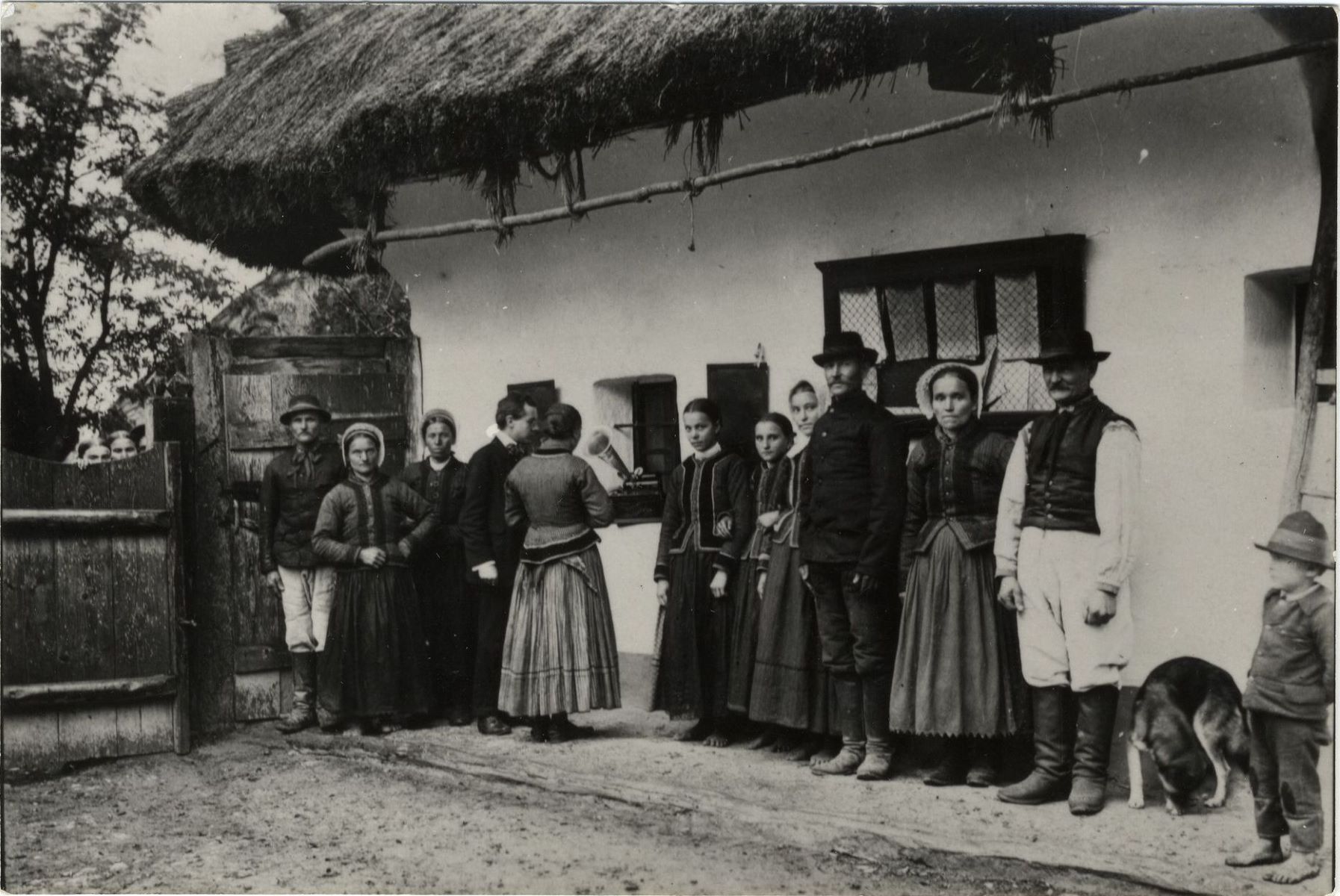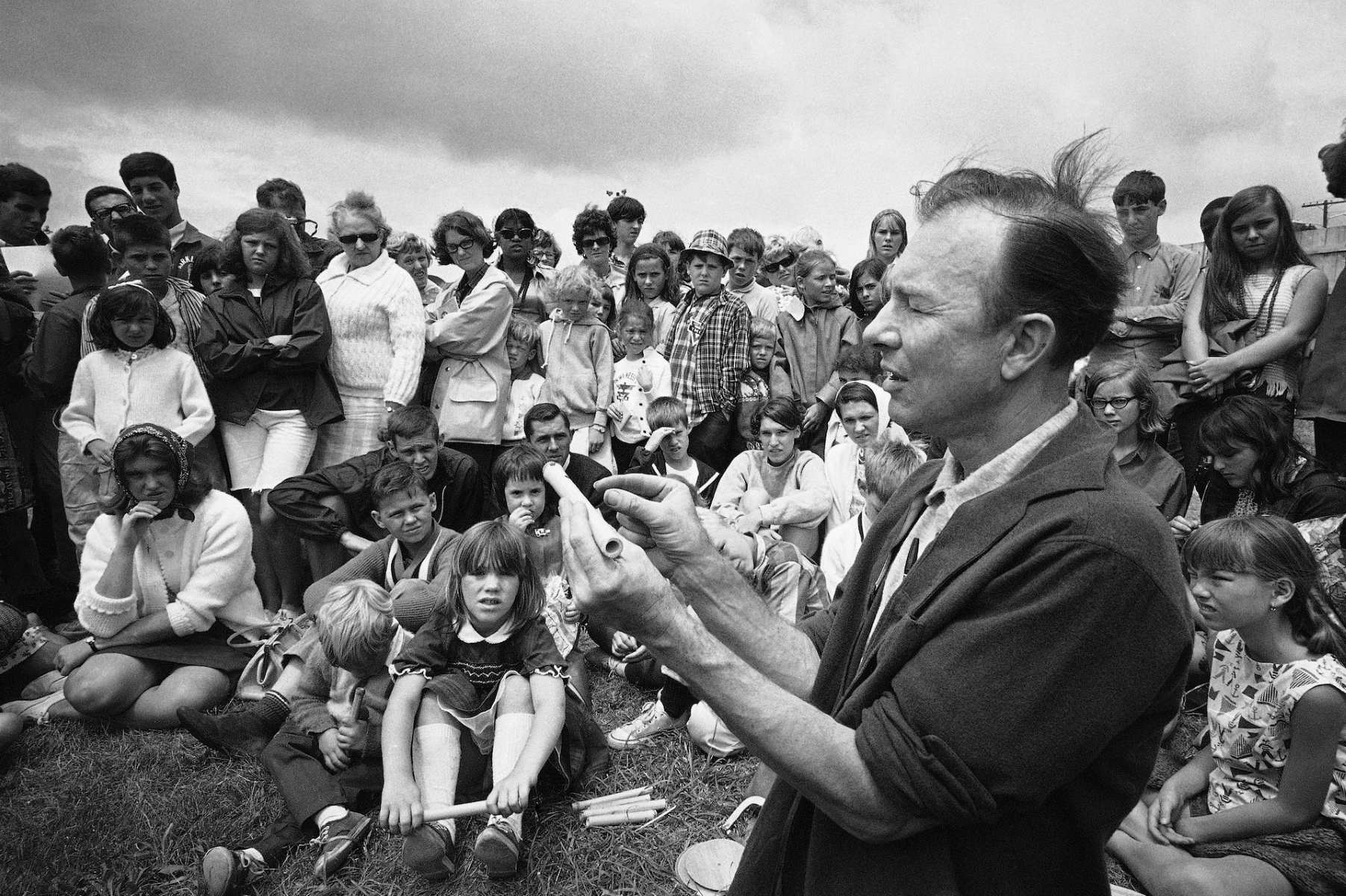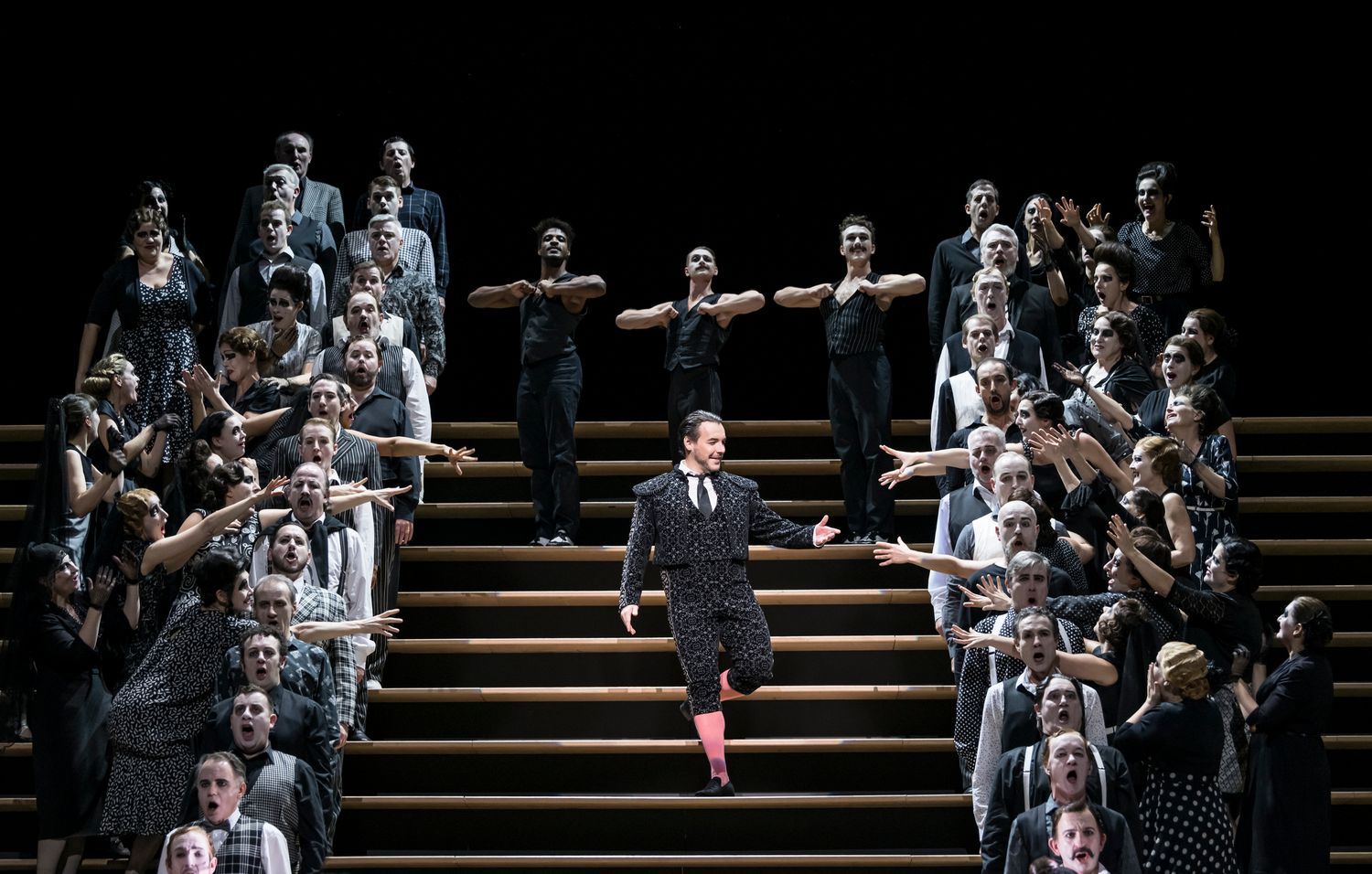

Folk
When Did Folk Music Originated
Modified: January 22, 2024
Discover the origins of folk music and its rich history. Explore the roots and evolution of this timeless genre
(Many of the links in this article redirect to a specific reviewed product. Your purchase of these products through affiliate links helps to generate commission for AudioLover.com, at no extra cost. Learn more)
Table of Contents
Introduction
Folk music is a cherished art form that has been passed down through generations, capturing the essence of a culture’s history, traditions, and values. It is a genre of music that reflects the stories and experiences of ordinary people, often accompanied by acoustic instruments and simple melodies. From heartfelt ballads to lively dance tunes, folk music resonates with audiences around the world.
But when did folk music originate? This question takes us on a journey through time, exploring the roots and evolution of this beloved genre. While pinpointing an exact date or place of origin is challenging, folk music has been an integral part of human civilization for centuries, evolving and adapting to different cultures and contexts.
Throughout this article, we will delve into the origins of folk music, tracing its roots back to ancient times and exploring its evolution across cultures. We will also touch upon the modern manifestations of folk music as it continues to thrive in the contemporary music scene.
So, grab your metaphorical walking stick and join us as we embark on a musical journey through time, unraveling the mysteries of folk music’s beginnings and its enduring appeal.
Origins of Folk Music
The origins of folk music are deeply intertwined with the history and culture of various civilizations. While it is challenging to pinpoint an exact time and place of its origin, folk music can be traced back to the beginnings of human civilization.
In its essence, folk music emerged as a means of storytelling, as a way for communities to pass down their history, traditions, and values from one generation to the next. It was a form of oral tradition that provided a sense of identity and belonging to a community.
One theory suggests that folk music originated in prehistoric times when early human beings used rhythm, chants, and crude instruments to communicate and express their emotions. These early musical expressions helped foster social cohesion and served as a means of survival, celebrating important events such as hunting, harvesting, and rituals.
As human civilizations began to develop, folk music diversified and adapted to different regions and cultures. It became deeply rooted in the fabric of societies, reflecting the unique experiences and struggles of ordinary people. Whether it was the slaves in the plantations of the American South singing the blues or the peasants in medieval Europe composing ballads about their day-to-day lives, folk music became a powerful medium for self-expression and cultural preservation.
Furthermore, the oral tradition of passing down folk music played a crucial role in shaping its evolution. With each new generation contributing to the repertoire, folk music continued to evolve, incorporating influences from different styles and genres.
It is essential to recognize that folk music is not limited to a specific geographical region or cultural group. Every culture and community has its own unique folk music traditions, each with its distinctive sounds, melodies, and stories. From the haunting melodies of the Celtic music in Ireland to the soul-stirring rhythms of African tribal chants, folk music transcends borders and connects people on a profound level.
Overall, the origins of folk music are deeply rooted in our shared human experience and the need to communicate, connect, and preserve our stories. As we continue our journey through the evolution of folk music across cultures, let us immerse ourselves in the rich tapestry of sound and emotion that this genre has to offer.
Folk Music in Ancient Times
In ancient times, folk music played a vital role in the lives of people, serving as a means of storytelling, celebration, and cultural expression. While specific ancient folk music traditions varied across different regions, there are several notable examples that provide insights into the significance of this art form.
One of the earliest documented instances of ancient folk music can be traced back to ancient Mesopotamia, the cradle of civilization. In Mesopotamia, music was an integral part of daily life, and folk songs were composed to commemorate various occasions such as weddings, harvest festivals, and religious ceremonies. These songs often featured simple melodies accompanied by instruments such as lyres and flutes.
Ancient Egypt also had a rich tradition of folk music that consisted of melodic tunes accompanied by percussion instruments like drums and tambourines. Music was an essential part of religious rituals, social gatherings, and even labor activities such as farming and boat rowing. The sound of music could be heard reverberating through the ancient Egyptian temples and along the banks of the Nile.
In ancient Greece, folk music played a prominent role in their culture as well. Music was considered a gift from the gods and was intertwined with mythology and epic poetry. Folk songs known as “skolia” were sung at banquets and social gatherings, often accompanied by instruments such as lyres and flutes. These songs celebrated heroism, love, and the joys of life.
Similarly, in ancient China, folk music held deep cultural significance. It was a means of storytelling, transmitting ethical values, and preserving historical accounts. Traditional Chinese folk songs, such as the “qinqiang” of Shaanxi province or the “yueju” of Zhejiang province, incorporated unique vocal techniques, poetic lyrics, and distinctive regional instruments.
These ancient examples demonstrate how folk music has existed since the earliest civilizations, serving as a way for people to express their emotions, histories, and cultural heritage. It highlights how music was not only a form of entertainment but also a way to connect communities and pass down traditions from generation to generation.
Evolution of Folk Music
The evolution of folk music is a fascinating journey that reflects the changing times and influences of different eras. From its humble beginnings in ancient times to the present day, folk music has adapted, merged, and transformed in response to social, cultural, and technological advancements.
One significant turning point in the evolution of folk music can be traced back to the period of the Renaissance in Europe. During this time, there was a renewed interest in studying and reviving ancient cultural traditions, including folk music. Collectors and scholars traveled across regions, documenting and preserving traditional songs and melodies. This movement contributed to the preservation and revitalization of folk music, ensuring its survival for future generations.
As the world entered the industrial revolution, folk music took on new forms and themes. With the rise of urbanization and the migration of rural populations to cities, urban folk music emerged as a response to the changing social and economic landscape. This new wave of folk music addressed issues of labor, inequality, and social justice, echoing the struggles of the working class.
In the United States, the early 20th century saw the emergence of folk and blues music, deeply rooted in African-American traditions. Artists like Lead Belly, Woody Guthrie, and later, Bob Dylan, used folk music as a means of storytelling and activism, addressing themes of civil rights, poverty, and protest. The folk music of this era became a powerful vehicle for expressing dissent and inspiring social change.
The mid-20th century witnessed a folk music revival, fueled by the surge in popularity of folk festivals and the birth of the singer-songwriter movement. Artists like Joan Baez, Pete Seeger, and Joni Mitchell brought folk music to the mainstream, forging a connection with a wider audience. The genre continued to evolve, incorporating elements of rock, country, and world music into its sound.
In recent years, folk music has experienced a renaissance, with a new generation of musicians blending traditional folk elements with contemporary influences. The folk scene has expanded globally, with artists from various cultures infusing their unique styles into the genre. This fusion of traditional and modern has given rise to sub-genres like indie folk, neo-folk, and folk-pop.
As technology has advanced, so too has the dissemination of folk music. The internet and digital platforms have made it easier for independent artists to share their music with a global audience, expanding the reach and accessibility of folk music. Online communities and streaming platforms have also facilitated collaboration and the exchange of ideas among folk musicians from different corners of the world.
The evolution of folk music is a testament to its ability to adapt and resonate with each generation. While the core essence of folk music remains rooted in storytelling and cultural expression, the genre continues to evolve, reflecting the ever-changing world we live in.
Folk Music across Cultures
Folk music is a universal language that transcends cultural boundaries. It is a testament to the diversity and richness of human experiences across different societies and regions. From the highlands of Scotland to the plains of Africa, folk music embodies the unique sounds, rhythms, and storytelling traditions of various cultures.
In Scotland, traditional Scottish folk music, known as “Cèilidh,” is deeply ingrained in the cultural fabric. With its distinctive bagpipes, fiddles, and lively dance tunes, Cèilidh music reflects the history and traditions of the Scottish people. The songs often recount tales of battles, love, and resilience, keeping the Scottish heritage alive.
In Ireland, the melodic and enchanting sounds of Irish folk music are a cultural treasure. The traditional instruments such as the bodhrán, tin whistle, and fiddle create a distinctly Celtic atmosphere, evoking emotions of joy, sorrow, and longing. Irish folk songs, like “Danny Boy” and “The Fields of Athenry,” have become iconic representations of the Irish musical tradition.
In West Africa, folk music is deeply rooted in the cultural and spiritual practices of various ethnic groups. Griots, who are oral historians and musicians, use traditional instruments like the kora and balafon to tell stories and pass down the history of their communities. West African folk music is characterized by intricate rhythms, call-and-response singing, and vibrant percussion.
Traditional folk music in India is as diverse as its rich cultural landscape. With a plethora of regional styles like Baul, Qawwali, and Bhangra, Indian folk music reflects the vast multicultural heritage of the country. Instruments like the sitar, tabla, and harmonium accompany the soulful melodies and intricate rhythms, transporting listeners to the different corners of India.
In Latin America, folk music embodies the vibrant and passionate spirit of the people. From the samba rhythms of Brazil to the mariachi music of Mexico, each country’s folk traditions carry their unique flavors and cultural identities. Latin American folk music often combines indigenous, European, and African influences, resulting in a diverse array of sounds and styles.
These examples are just a glimpse into the vast tapestry of folk music across cultures. Each culture’s folk music reflects its history, traditions, and values, providing a glimpse into the hearts and souls of the people. Whether it’s the haunting melodies of the Scottish Highlands or the rhythmic beats of West African drums, folk music allows us to appreciate and celebrate the diverse expressions of humanity.
Modern Folk Music
Modern folk music is a vibrant and ever-evolving genre that continues to captivate audiences around the world. While rooted in the traditional sounds and storytelling of the past, contemporary folk music embraces innovative approaches and influences from diverse musical styles.
In recent years, there has been a resurgence of interest in folk music, with a new generation of artists breathing fresh life into the genre. These modern folk musicians draw inspiration from the rich lineage of folk traditions and merge it with contemporary elements, pushing the boundaries of the genre.
One of the defining characteristics of modern folk music is the emphasis on authenticity and individual storytelling. Songwriters often draw from their own personal experiences and social issues, addressing topics such as love, social justice, and the environment. The lyrics are introspective, thought-provoking, and serve as a reflection of the artist’s perspective on the world around them.
Technology has played a significant role in the growth and popularity of modern folk music. Independent artists can now record and distribute their music without the need for a major label, reaching a global audience through various online platforms and streaming services. This democratization of music production and distribution has allowed for a more diverse and inclusive folk music scene.
Modern folk music also embraces collaborations and fusions with other genres. Artists experiment with incorporating elements of rock, pop, jazz, and even electronic music into their sound, creating a unique blend of traditional and contemporary influences. This cross-pollination of styles breathes new life into the genre, attracting a wider audience and pushing the boundaries of what folk music can be.
Additionally, folk music festivals and live performances continue to be a vital part of the modern folk music scene. These events provide a platform for both established and emerging folk artists to showcase their talent and connect with their audience. Folk festivals celebrate the rich diversity of the genre and serve as a gathering place for folk music enthusiasts from all walks of life.
Some notable modern folk musicians who have made significant contributions to the genre include artists like Mumford & Sons, Laura Marling, The Lumineers, and Fleet Foxes, among many others. Their music combines traditional folk elements with contemporary production techniques, creating a sound that appeals to a wide range of listeners.
Whether it’s through intimate acoustic performances or full-band arrangements, modern folk music continues to inspire, provoke thought, and evoke emotions. Its ability to adapt, evolve, and touch the hearts of people around the world ensures that the legacy of folk music will endure for generations to come.
Conclusion
Folk music, with its deep roots in human history, has captivated and resonated with people across cultures for centuries. From its mysterious origins in ancient times to its modern-day incarnations, folk music has evolved, adapted, and thrived, remaining a powerful means of storytelling and cultural expression.
Throughout this journey, we have explored the origins of folk music, discovering its ancient beginnings and the way it has evolved across different cultures. We have seen how folk music has been a vital part of human civilization, reflecting the joys, sorrows, struggles, and triumphs of ordinary people.
As folk music spread across regions and generations, it absorbed influences from various cultures, resulting in a diverse tapestry of sounds and themes. The genre has demonstrated an incredible ability to adapt to changing times, incorporating new elements and collaborating with other musical genres.
Today, modern folk music continues to thrive, with a new generation of artists pushing the boundaries of the genre while staying true to its roots. With the accessibility of technology, folk music has found a global stage, allowing artists to connect with audiences around the world and share their stories and experiences.
Whether it is the haunting melodies of traditional Scottish ballads, the rhythmic beats of West African folk music, or the introspective songwriting of contemporary folk artists, the power and allure of folk music remain universally compelling.
Folk music serves as a testament to the diversity and richness of human experiences, connecting people on both a personal and cultural level. It reminds us of our shared humanity and the importance of preserving and celebrating our stories, traditions, and values.
As we conclude our exploration of folk music, let us celebrate the enduring legacy of this beloved genre. Let us continue to appreciate the beauty and power of folk music, supporting both established and emerging folk artists as they carry the torch forward into the future.
So, whether you find yourself tapping your feet to a lively Celtic tune, reflecting on the heartfelt lyrics of a contemporary folk song, or joining in a joyous folk music festival, let the melodies and stories of folk music transport you to a place where tradition and innovation intertwine.











